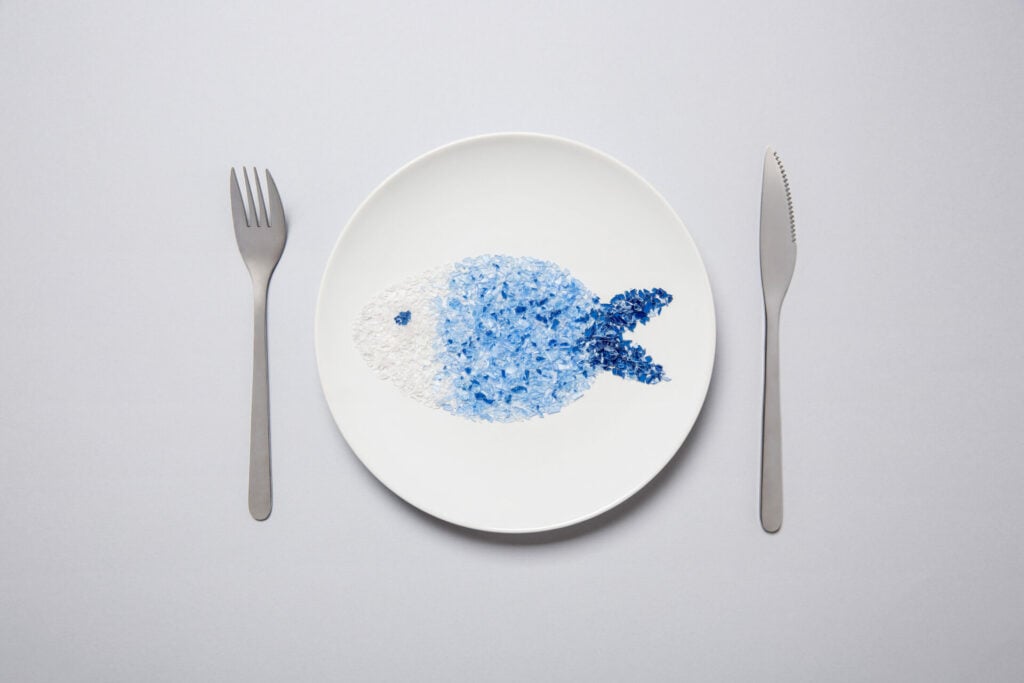Whether you’re dancing at your Christmas party in sequins and matching body glitter and eyeshadow, sporting tiny flecks in your nail varnish, or bathing in sparkly bath products, there has never been such a demand for shimmer in the beauty industry.
But the truth about glitter isn’t quite as shiny as it seems as typically it consists of a layer of non-biodegradable plastic, a polymer called called polyethylene terephthalate (PET), or Mylar, as well as a thin colored layer and a reflective layer — often made of aluminium. These are bonded into a thin sheet, then cut into tiny shapes, whichmeasure less than 5mm, and are considered a form of microplastic.

Glitter, like any other plastic, takes hundreds, possibly thousands of years to decompose. If it contains PVC it will have plasticizers which can take even longer to break down, and is made of polymer called while microplastics also attract inorganic and organic chemicals as well as toxic heavy metals.
A mind-blowing 24.4 trillion pieces of microplastics litter the world’s upper oceans with a combined weight of up to 578,000 tons – the equivalent of a lorry load per minute.
A big risk to wildlife and marine life comes from the bioaccumulation of these toxins in the food chain once the microplastics end up in the ocean after entering rivers from our homes when we wash it down the drain, or run-off from landfill sites.

A mind-blowing 24.4 trillion pieces of microplastic litter the world’s upper oceans, scientists believe, with a combined weight of up to 578,000 tons – the equivalent of a lorry load per minute. The glitter is eaten by marine organisms that can’t tell the difference between food and those tiny specks of plastic.
Food Chain
Microplastics move through the food chain, starting at the bottom – studies have shown that even oysters are ingesting it – and work their way up as the marine life begin to consume each other.

Fish caught for human consumption are increasingly found to contain plastic particles which we then eat. Fish that are ingesting these microplastics are increasingly dying before they reach reproductive age, which will have a huge impact on the health of the entire eco-system as we have less and less fish in our oceans.
‘The problem with glitter is that it’s really tiny and it gets into everything,’ explains social anthropologist Tricia Farrelly. ‘You put it on and you wash it off. It is made to be disposed of. It’s a no-brainer for glitter – we have to stop producing it.’
Until that happens – and there are calls to ban it in line with the 2017 ban on microbeads in toiletries –the best thing we can do as consumers is to turn our back on nonbiodegradable glitter entirely. After all, nobody needs to sparkle with plastic particles at parties especially as you can do that with your personality!
But luckily there is a sustainable alternative – and unlike microplastic glitter, it doesn’t stick around on the earth or in our seas. ‘Biodegradable glitter can be made out of anything that is natural or naturally derived,’ explains cosmetic chemist Ron Robinson of BeautyStat.com.

It is made from the cellulose of plants, such as eucalyptus, grown on land that isn’t suitable for food crops, and is compostable. It should be certified by a third party. If it isn’t assume it is plastic – and if the label reads aluminum, polyethylene terephthalate (PET), polyethylene (PE) or polypropylene (PP), put it back on the shelf so it never has a chance to infiltrate the eco-system.
Sparkle in Biodegradable Glitter

1. Dust Dance – Dust & Dance’s biodegradable glitters are beautiful mixes of specially selected eco-friendly sparkles, made up of gorgeous colours and sizes to create the best chunky combination for you. Made from plant cellulose they are compostable, cruelty free and vegan.
Try: Dust and Dance Pastel Pot (£3.25 per pot DustandDance.co.uk)
2. Peace with the Wild offer an array of sparkles for your face, body, cream and hair that will make you shine without harming the earth. Certified biodegradable their glitters are made from eucalyptus and are vegan and cruelty free
Try: Eco Glitter Fun in Candy floss, a striking and vibrant mix of blues, pinks and silvers. (£4.50 from peacewiththewild.co.uk)

3. ILIA is a luxe cosmetics brand that offers a product range that will only contain sparkle if it comes from natural, biodegradable sources.
Try: ILIA Illuminator Polka Dots & Moonbeams AED449
4. Eco Stardust create biodegradable glitter make up sets made from sustainably farmed eucalyptus trees. Their products come in plastic free packaging with a sustainable bamboo applicator blush and natural aloe vera cream for sticking.
Try: Eco Stardust Rainbow with five biodegradable glitters in aluminium Tins including Kiss Me Quick, Gold Digger, Green Pixie, Beau Blue and Lavender. (EcoStardust.com £25)
5. LUSH Fresh Handmade Cosmetics uses only biodegradable glitter in its products, in the form of synthetic mica.
Try: LUSH Shoot For The Stars Bath Bomb (41 AED, Lush.ae)
6. Dr Hauschka also uses mica in its products, making its sparkly cosmetics the perfect natural and ethical alternative for shimmer fans.
Try: Dr Hauschka Matte & Shimmer Blush Trio (210 AED, Basharacare.com)













